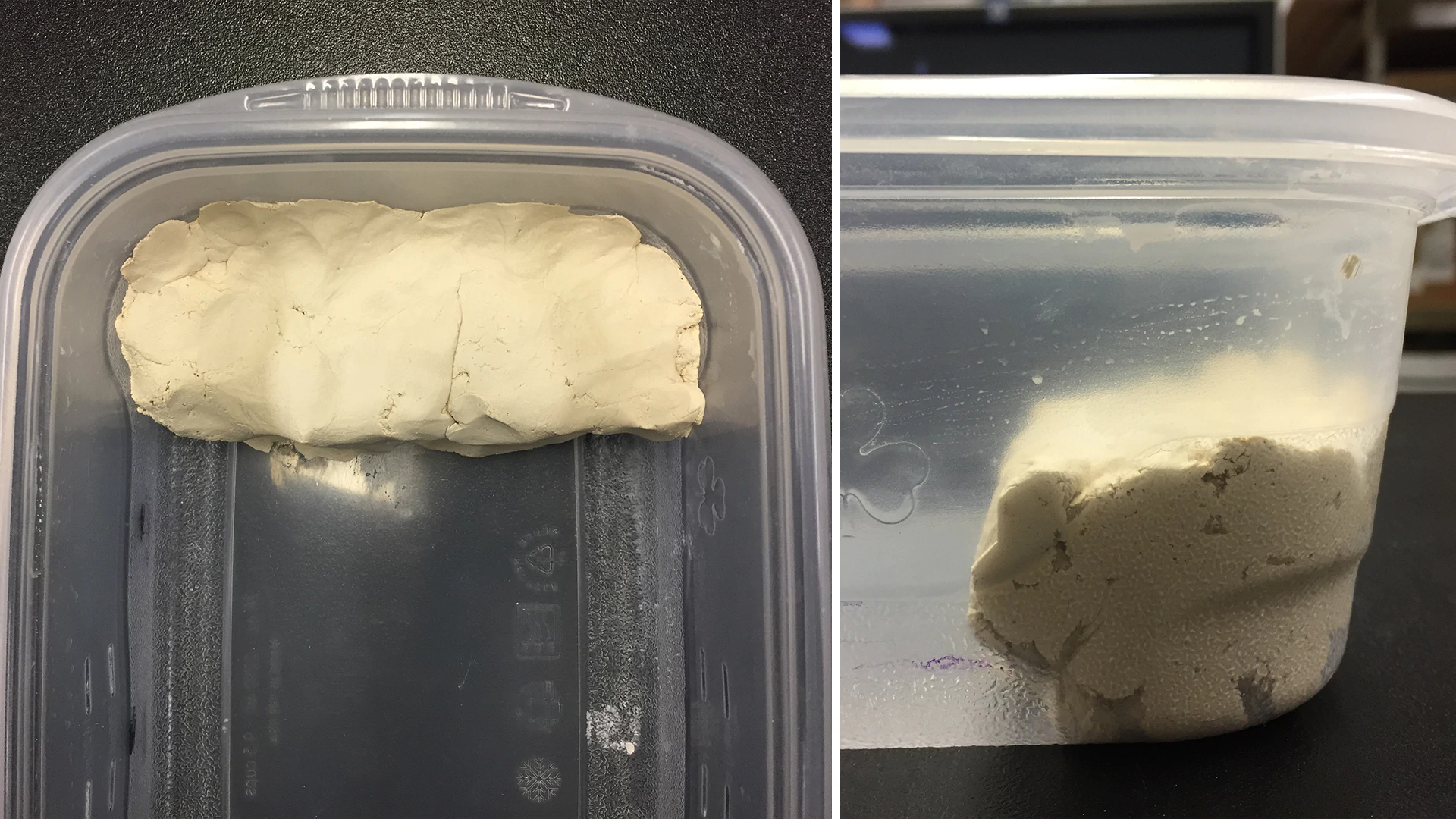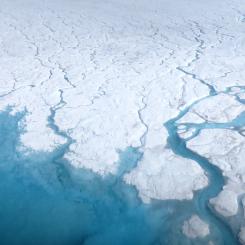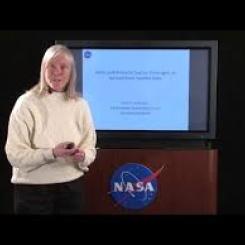Lesson Plans
What's Causing Sea-Level Rise? Land Ice Vs. Sea Ice
Overview
In this activity, students will learn about sea ice and land ice. They will observe ice melting on a solid surface near a body of water and ice melting in a body of water. Prior to the activity, students will predict what each situation will do to the level of water and then compare their prediction to what they observe.
Materials Required
- 2 identical, clear plastic food-storage containers, approximately 6" x 6"
- Clay (enough to fill about 1/4 of each tub with 1-2" of clay)
- Tray of ice cubes
- Ruler
- Water
- Permanent marker (optional)
Management
- This activity can be done in groups or as a whole-class demonstration. The materials list above is for one group or one whole-class demonstration.
- This activity takes time, as a given quantity of ice has to melt. If you have students all day, the activity can start at the beginning of the day and be revisited at regular intervals throughout the day. If students meet for only a class period, consider accelerating the ice melt by placing the experiment near a warm lamp or a source of mild warmth.
- Be aware that the ice in the water will melt faster than the ice on the “land.”
- Be sure the clay surface will allow the melted land ice to flow into the body of water. Avoid pressing your fingers into the clay and creating depressions that will block the flow of water.
Procedure
- As a class, discuss sea-level rise and climate change. Tell students they’re going to conduct an experiment to learn how melting ice contributes to sea-level rise.
- Ask students where there is a lot of ice on Earth. Ask them to specify if the ice is on land or at sea. (The Greenland and Antarctic ice sheets, along with smaller mountain glaciers, are considered land ice. The ice in the Arctic is frozen seawater and therefore considered sea ice.)
- Ask students which type of ice, if any, contributes more to sea-level rise. Ask students to explain their thinking.
- On the student data sheet, have students record their prediction about which type of ice will contribute more to sea-level rise.
- Provide each group with the required materials and directions to conduct the experiment.
- Press equal amounts of clay into one side of each plastic tub, making a smooth, flat surface representing land rising out of the ocean.

For access to the remaining procedures, visit JPL's classroom activity
- How does melting of Earth’s Cryosphere contribute to sea-level rise?
- How do we model change in the Earth's system?
- What are the limits of our model?
Background
Sea level is rising, in part, because melting glaciers on land are adding more water to Earth’s oceans. Glaciers – large sheets of ice and snow – exist on land all year long. They are found in the mountains of every continent except Australia. Greenland and Antarctica contain giant ice sheets that are also considered glaciers. As temperatures rise, glaciers melt faster than they accumulate new snow. As these ice sheets and glaciers melt, the water eventually runs into the ocean, causing sea level to rise.
Icebergs and frozen seawater also melt in warm temperatures but do not cause sea level to rise. This is because they are already in the water. The volume of water they displace as ice is the same as the volume of water they add to the ocean when they melt. As a result, sea level does not rise when sea ice melts.
Another contributor to sea-level rise is the increase in volume that occurs when water is heated, called thermal expansion. Both thermal expansion and ice melt are the results of the rise in global average temperatures on land and sea known as climate change.
- Use the data from the student data sheet to create a line graph using spreadsheet software.
- Complete the "Lessons in Sea-Level Rise" activity.
Explore More
- NASA Climate Change website – Explore news, mission data, images and vital signs that track the changes happening on Earth.
- NASA Climate Change social media – Follow the latest news and updates from NASA Climate Change on: Facebook | Twitter | Instagram | YouTube
- NASA Sea Level Change Portal
- Images of Change – Compare satellite images taken at different periods to see how Earth is changing.
- Infographic: Sea-Level Rise
- Infographic: Earth's Carbon Cycle Is Off Balance
- Climate Kids website – Games, projects, and activities all about Earth and climate for children between the ages of 8 and 13.
- Standalone Lesson (no technology required)





